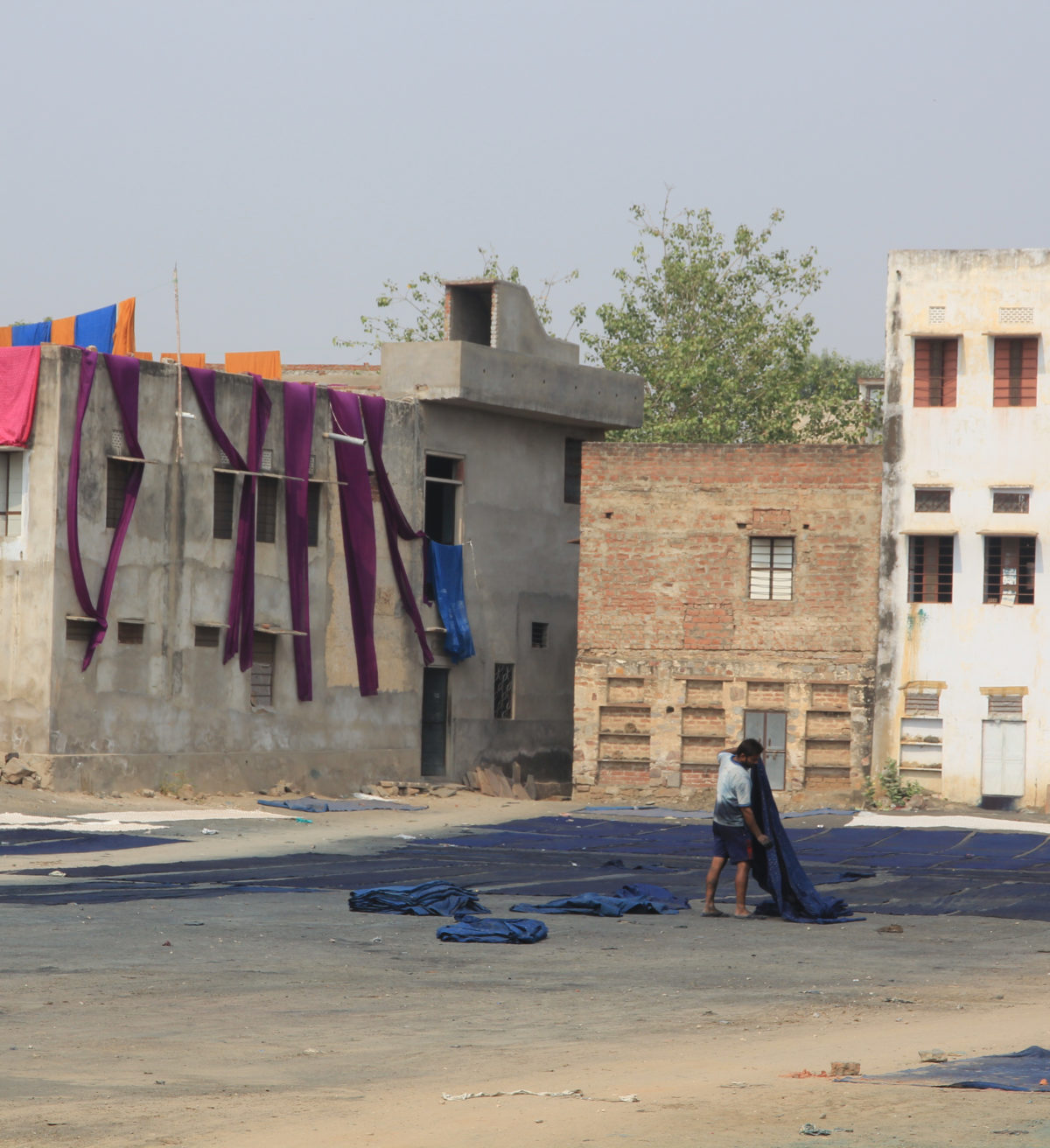Collaborations of Designers and Artisans
Indigo, brown, purple. Meters and meters of fabric on dusty ground, drying in the sun. Bagru is a village of dyers and block printers. For ages, they have been working with fabric here, the knowledge is handed over within the families, about how to produce natural colors, how to deal with synthetic ones, how to dye, how to carve blocks and print. Complex processes and techniques are used here, that crave highly skilled artisans.
When I visited the blockprinters community in Bagru, I met Carol, a New York fashion designer. She was just about to try out new prints for her next collection. After years in the fashion industry she created her own label, as she wanted to produce clothes in a way that seemed for her more meaningful than industrial mass production. After many years of travelling, she calls India her second home and comes back every year, to visit her the block printers, dyers and weavers that manifacture her clothes.
Carol does, as many designers do, an „outsourcing of the hand“, as Kevin Murray calls it in his article. It is a common practice today to leave handmade processes to artisans in poorer countries. A range of questions around this kind of collaboration occurs, as Murray points out: Manuel labour in the west has for a long time been declining. But also in the poorer countries of Asia or Africa, craft traditions are challenged and endangered by processes of globalization and about to disappear, as cheap import is pushing aside handmade products. One solution can be to find new markets, where these products are cherished – and these are often in the Western world, says Murray. To be attractive to western buyers, designs often need to be adapted to Western Aesthetics. To which degree are the artisans involved in the creative process then? Drawing from case studies, Murray describes different stages and manners of collaboration between designer and artisan, distinguishing straight commissioning, creative development and business development. In the first case, designers order from artisans. In the second, artisans are encouraged to develop their own designs. In the third, they are supported to create a business model around their skills, adapting their craft to changing markets.
Murray concludes that craft outsourcing can foster the development of crafts bridging tradition and modernity. Yet, he argues, there is too little we know about what the artisans think about this themselves: „The development of a forum for the voice of the artisan is a critical step in the potential of world craft to develop into a vehicle for global dialogue.“ (71) And for designers, there is a call to take over responsibility and find creative solutions here.
Kevin Murray. Outsourcing of the hand: An analysis of craft-design collaborations across the global divide. Published in craft + design enquiry; Issue 2, 2010, Cross cultural exchanges in craft and design
http://press-files.anu.edu.au/downloads/press/p212111/pdf/05-outsourcing.pdf
